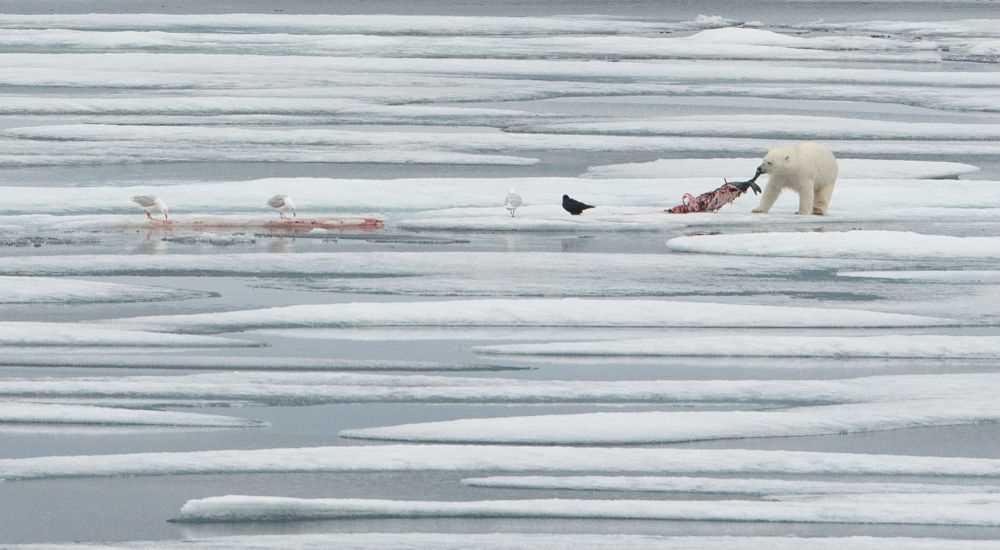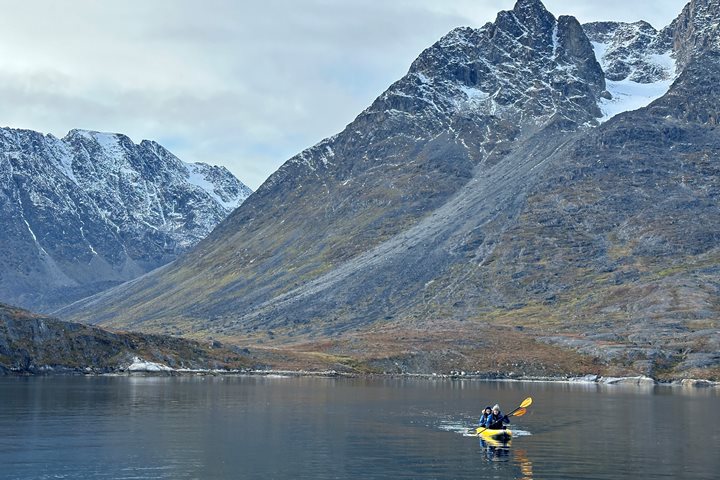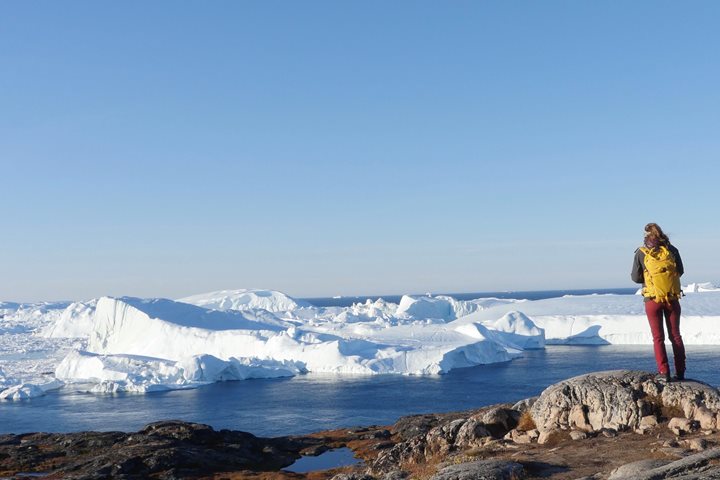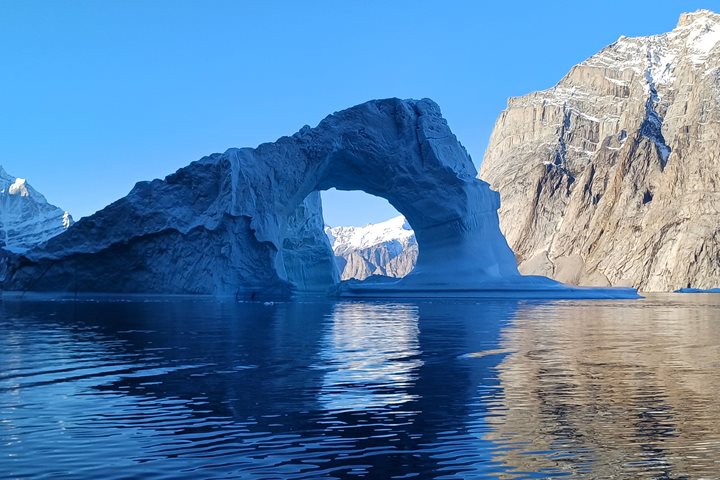Good things come to those who wait.
The bridge was buzzing with guests, staff, and crew all wielding binoculars and peering out into the fog. We had found some good sea ice – perfect for polar bears – but the visibility was greatly reduced. We persevered. Through the morning, during our photo breakout session, and through lunch, a rotating team kept watch in hopes of finding wildlife.
Beautiful patterns in the sea ice, various birds, and seals kept us amused until a crew member found a bear just after lunch.
After a few moments, the bear dragged its kill out of the snow, swam into the water with it, and then pulled it back onto the ice. Ravens and gulls came in to grab pieces while the bear wasn’t looking. The captain drove the ship closer until we could clearly see the bear shaking water from its fur and tugging at the seal’s flippers.
Soon after our bear encounter we disembarked at the base of Caswell Tower, a high cliff that looms over Radstock Bay on the south coast of Devon Island. We saw the remains of beautiful Thule winter houses that were built by indigenous whale hunters approximately 800 years ago. We could make out the location of the entrance tunnels, as well as roof supports made in whale bone, and the interior structures where the family would have sat. Looking at those houses, archaeologist Dan helped us imagine life at that time and the undeniable expertise the whale hunters had to make use of everything they found on the land.
Some guests worked on photographs or botany while others climbed Caswell Tower itself to take in the view of Radstock Bay. Shifting cloud, fog, ice, and light renewed the landscape many times.
The tundra gives us broad views but also reminds us to look at the details. Today our experience ranged from wildlife to broad vistas and the tiny plants and lichen that give the tundra its subtle color palette.









